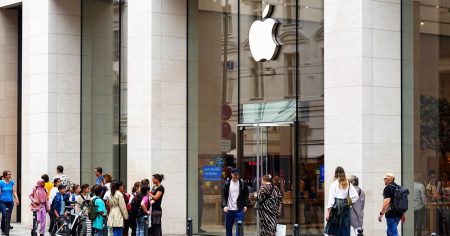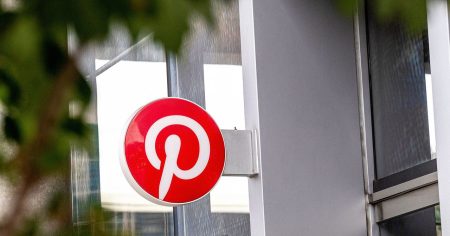Long hours, little sleep, and loads of caffeine — these are the key ingredients to success in many people’s eyes. We tell ourselves that the more we work, the more we can get done, and the more successful we become. This belief system is perhaps best summed up by the term “hustle culture,” which has come to permeate nearly every aspect of our society, from the way we work to the way we approach hobbies. Hustle culture rewards hard work and constant busyness as critical to career growth and overall self-worth, but it’s worth interrogating whether this approach produces the outcomes it claims to.
The past several years have been characterized by ongoing reports of burnout and a widespread cultural pushback to what many see as an overemphasis on productivity. Americans now work fewer hours than they did pre-pandemic, and many say they value work-life balance differently. Trends like “quiet quitting” and “lazy girl jobs” represent this shift — away from maximizing one’s productivity in favor of prioritizing better boundaries.
For Ryan Crownholm, author of the book, The Hustle Trap: A How-To Guide for Doing Less and Making More with Your Business, this change has been a long time coming: “Many are realizing that relentless hustle isn’t the only path to success…. long-term success requires a holistic approach, encompassing not just work, but also personal well-being.”
Less Hustling, More Doing
Crownholm notes that hustle culture still has its place in a world that is reorienting toward better work-life balance and overall wellness. Hard work can still pay off, he says, but we need to be working toward a clear goal. “Relentless hustling without direction…can lead to burnout and stifle creativity,” Crownholm explains. “Scaling a business requires strategic thinking, delegation, and sometimes, taking a step back to reassess and gain clarity.”
True productivity, Crownholm emphasizes, is about working with purpose and intention, and does not mean working non-stop. As an entrepreneur who bootstrapped his first companies, Crownholm had to learn this lesson the hard way. His perspective on smarter work developed after he was in a major accident, and was forced to plan around his convalescence. “It became evident that while being hands-on is valuable, creating a business that can thrive even in one’s absence is the true hallmark of sustainable success,” he said.
Learning to plan for rest isn’t just critical to career success, however; it’s vital to our well-being and how we relate to others. Manoj Dias, Co-founder of Open and VP of Mindfulness, explains that “without rest, we can’t function optimally…you tend to operate reactively since [you’re] often running on cortisol and adrenaline.”
When considering how best to achieve this balance between work and rest, a new model may be helpful. Dr. Breanna Gentil, Ph.D. suggests considering work-life balance as a ratio, because it may more accurately emphasize the limits on our energy and time that we need to respect. “Work-life balance feels like a constant act of giving and taking,” she explains. “Work: rest ratio implies there’s a finite amount, a pie if you will, of working and resting that a person can do in a day, week, lifetime.” Only through being realistic with ourselves about what we have to give, can we be in harmony with our body’s true needs, and create real sustainability.
Tuning Out The Noise
In addition to the internal struggle to find balance, there is often external pressure to appear productive. Crownholm notes that social media plays a part here, and worries that some younger people may be especially susceptible to internalizing this messaging.
Dr. Gentile explains that there are natural human impulses that allow this sort of peer pressure to thrive. “As humans, we are always doing things for others’ approval and reaction,” she said. “I don’t think acting busy…is any different.”
Dias has seen similar trends. “The glorification of busyness can be seen as synonymous with self-worth,” he said. Still, he sees positive trends despite these challenges. “The younger generation has been raised with more awareness around positive mental health and burnout, so it’s unsurprising that they are most resistant to hustle culture.”
Even so, Dias emphasizes the importance of care in readjusting our attitude toward work: “Life tends to be a dance between pushing and pulling. There are times when we need to hustle and be productive and times when we need to prioritize slowing down and resting, especially so we can go again when the time comes.”
Hustle-Free Tips For Long-Term Success
Avoiding overwork while maintaining career success is a challenge for even the most experienced professionals. Crownholm notes a few key strategies that have worked for him across his entrepreneurial career: “Start by reassessing your mindset. Understand that your time is invaluable and should be optimized. Next, audit your business processes and identify areas that can be automated or delegated. Embrace technology and tools that can streamline operations. Prioritize tasks and focus on high-impact activities. And most importantly, schedule regular breaks and downtime. Remember, it’s not about working harder; it’s about working smarter.”
Dr. Gentile suggests managers and those with visibility in the workplace should model healthy boundaries: “I encourage by being an example. We don’t work on weekends. We end meetings on time, even early. Our timelines are realistic, not idealistic.” Demonstrating workplace values doesn’t just help overall productivity, she notes. It’s also a matter of safety and responsibility. “We work with youth—we literally cannot hustle or we are sending the same unsafe message they see and hear in the digital world everywhere they turn.”
Combating the persuasive attitude of hustle culture is an ongoing process across industries in the working world — and can be a hard case to make in some sectors. But, Dias believes “the business case ROI is simple.” He said workplaces that divest from productivity culture will experience “improved productivity and quality through reduced errors and costs; enhanced employee well-being; greater creativity and innovation [and] positive workplace culture.”
Read the full article here










